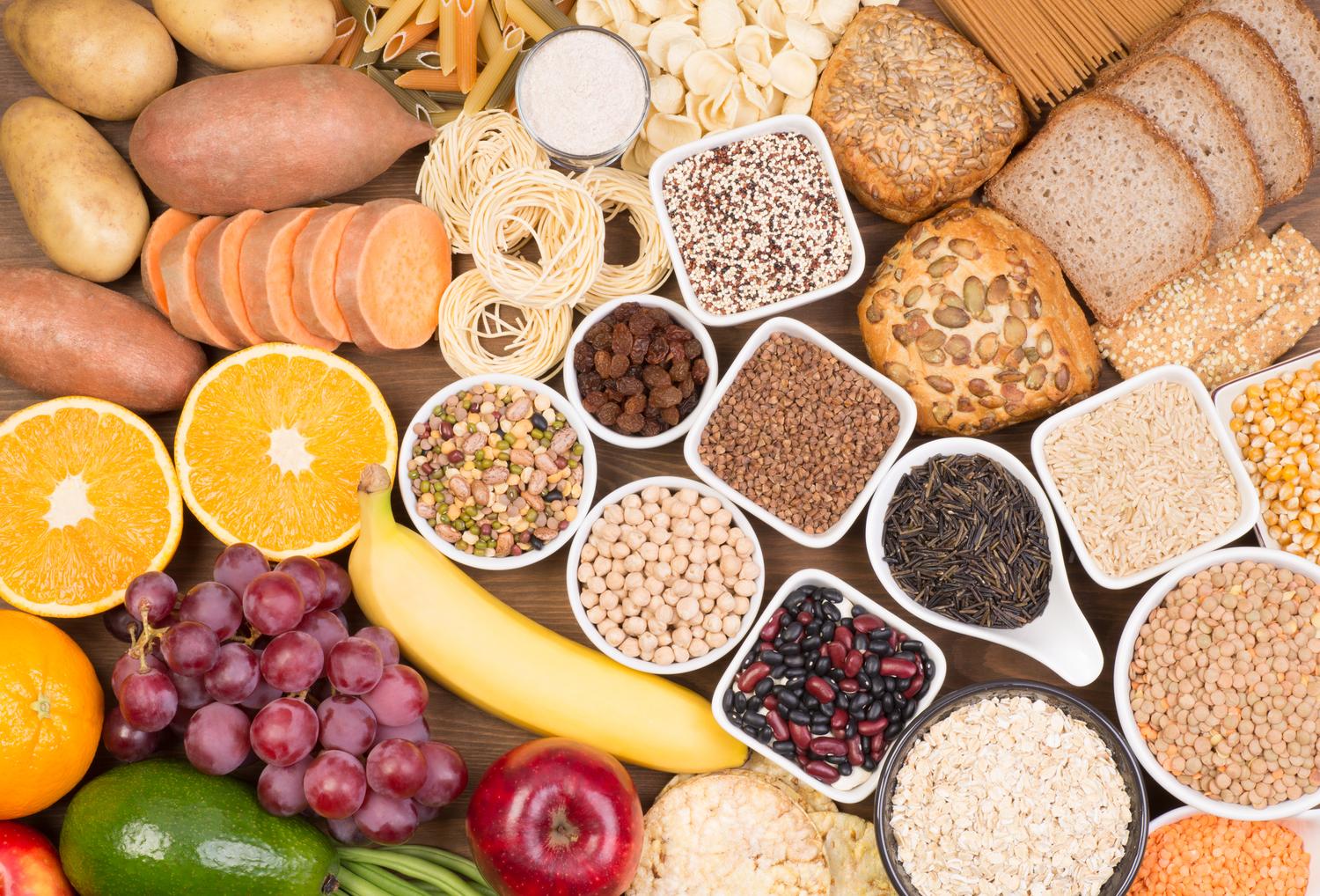Best Bread for Diabetes
Breads to look for and avoid in your grocery store
People managing diabetes must be careful about the types of bread they eat. The carbohydrates in bread can alter blood sugar levels, which can be dangerous for people with insulin resistance. Because of this, many people with type 1 or type 2 diabetes consider bread “off limits.” This general prohibition can make diabetes management easier for some.
However, what if you have diabetes but still want to eat bread? Bread is not taboo for a diabetes diet plan as long as you know what to look for. Below, you’ll find some tips about what to look for when browsing the bread aisle and what to avoid. We’ll also point you toward some of your local grocery store's best bread brand options.
Carbohydrate intake and diabetes management
Carbohydrates play a crucial role in diabetes management because they directly impact blood sugar levels. Diabetes is a chronic medical condition characterized by elevated blood sugar levels due to insufficient insulin production (Type 1 diabetes) or the body's inability to use insulin effectively (type 2 diabetes). Carbohydrates are one of the three macronutrients found in food, along with proteins and fats, and they are the body's primary energy source.
Carbohydrates are broken down into glucose during digestion, which is then absorbed into the bloodstream, causing blood glucose—or blood sugar—levels to rise. For people with diabetes, regulating blood glucose levels is crucial to preventing short-term and long-term complications.
To manage sugar spikes, carbohydrate intake must be carefully monitored. This is typically done through carbohydrate counting, a method that helps individuals with diabetes estimate the amount of carbohydrates in their meals and adjust their insulin or medication doses accordingly.
One key concept in diabetes management is the glycemic index (GI). The GI measures how quickly a carbohydrate-containing food raises blood sugar levels. Foods with a high GI, such as sugary drinks and white bread, cause a rapid spike in blood sugar, while low-GI foods, like whole grains and legumes, lead to a slower and more gradual increase. By choosing low-GI foods, individuals with diabetes can better control their blood sugar levels, helping to prevent sudden spikes and crashes.
Carbohydrates are not the enemy in diabetes management; quality and quantity matter. A well-balanced diet with the right amount of carbohydrates and regular physical activity is essential for maintaining blood sugar control.
Individualized meal plans, often created with a registered dietitian's (RDN) guidance, consider factors like age, gender, activity level, and medication regimen to ensure that carbohydrate intake aligns with an individual's specific needs.
Shopping for diabetes-friendly bread
For individuals managing type 1 or type 2 diabetes, reading the ingredient list on the packaging of any store-bought bread is essential. Many types of bread are processed with added sugar or sweeteners like high fructose corn syrup. These ingredients are added to bread to make it tastier, but these substances can seriously affect blood glucose levels, posing a potential danger to people with diabetes.
When buying bread at your local grocery store, look for these traits:
Whole grain and whole wheat
The American Diabetes Association recommends looking for whole-grain bread free of added sugars or sweeteners.
Whole wheat, whole grain, and multi-grain bread are three common types of bread with distinct differences.
Whole wheat bread is made from 100% whole wheat flour containing the entire wheat kernel, including the bran, germ, and endosperm.
On the other hand, whole-grain bread can be made from various whole grains, such as oats, barley, flax, quinoa, and wheat. It contains the whole kernel of multiple grains.
Multi-grain bread, however, doesn't necessarily mean it's made from whole grains. “Multi-grain” means it contains multiple types of grains, which may or may not be whole.
To make a healthy bread choice, individuals, especially those managing conditions like diabetes, should look for bread labeled "100% whole wheat" or "100% whole grain" to ensure they are getting the full nutritional benefits of whole grains.
Unlike refined white bread, which can cause rapid spikes in blood sugar levels, whole grain, and whole wheat bread contain complex carbohydrates and fiber. These components slow down glucose absorption, leading to a more gradual and steady rise in blood sugar, making them a better choice for individuals with diabetes. Additionally, these types of bread are high-fiber, which promotes satiety and helps with weight management, a critical factor in diabetes management.
Fiber
Fiber content is another important component of carbohydrates in diabetes management. Fiber is found in foods like fruits, vegetables, whole grains, and legumes and benefits blood sugar control. It slows down glucose absorption, helping stabilize blood sugar levels and reduce post-meal spikes. Including high-fiber bread and other fiber-rich foods in the diet can also promote a feeling of fullness and aid in weight management, which is crucial for people with type 2 diabetes.
When reading a Nutrition Facts label, look for bread with at least 3 grams of fiber per two-slice serving.
Carbs and calories
In addition to fiber content and the ingredient list, scan a loaf of bread’s nutrition label for serving size and calorie content information.
Counting calories is important for people managing diabetes, as it enables them to maintain better control over their blood sugar levels and achieve or maintain a healthy weight. By monitoring calorie intake, individuals can ensure they are not consuming excessive amounts of food, which can lead to weight gain and insulin resistance, a common issue in type 2 diabetes. Additionally, knowing the calorie content of meals and snacks allows for more precise insulin or medication dosing, helping to prevent both hyperglycemia (high blood sugar) and hypoglycemia (low blood sugar) episodes.
You should also check a bread’s carbohydrate content to ensure it stays within your carb count. Carbohydrates, when consumed in excess, can affect blood sugar levels. Carb counting is a process in which a person managing diabetes works with a registered nutritionist or dietician to determine how many carbohydrates they should aim to eat per meal. This number will vary depending on the person.
Aim to find bread containing 22 or fewer grams of carbs and 100 or fewer calories per serving (usually one slice of bread). This is generally considered a safe portion size for a single meal.
Sprouted grains
In addition to whole wheat or whole grain bread, look for bread containing sprouted grains. While sprouted grain bread is not carb-free, these loaves are low-carb options that boast a wealth of nutritional value.
Sprouted grain bread offers several health benefits for individuals managing diabetes. Unlike traditional bread made from flour, sprouted grain bread is made from whole grains that have started to germinate or sprout. This sprouting process enhances the nutritional profile by increasing nutrient bioavailability and reducing the carbohydrate content.
As a result, sprouted grain bread often has a lower glycemic index (GI), which means it has a milder impact on blood sugar levels. Additionally, sprouted grains are typically higher in fiber, vitamins, and minerals, such as folate and magnesium, all of which can contribute to better blood sugar control and overall health.
Fermented bread
Fermented bread, such as sourdough bread, can benefit individuals managing diabetes. The fermentation process involves the action of beneficial bacteria and yeasts, which break down some of the carbohydrates and gluten in the bread. This can result in bread with a lower glycemic index (GI) than non-fermented bread, meaning it has a gentler impact on blood sugar levels.
Additionally, fermentation can enhance the bioavailability of certain nutrients, making them more easily absorbed by the body. Sourdough bread, in particular, is often easier for some people to digest, which can be beneficial for those with digestive issues related to diabetes.
Best bread options for diabetes
The bread aisle can be a tricky place for those managing diabetes. These brands are considered among the best low-carbohydrate options available.
Whole grain & whole wheat sandwich bread:
- Dave’s Killer Bread Organic 21 Whole Grains and Seeds Bread
- RUDIS Bread 100% Whole Wheat Organic
- Oroweat Whole Grains 100% Whole Wheat Bread
Sprouted & Fermented Bread:
Diabetes-friendy bagels:
Low-carb tortillas:
- Siete Almond Flour Tortillas
- Alondras Low Carb Prickly Pear Nopal Tortilla
- Mr. Tortilla 1 Net Carb Tortillas
Gluten-free diabetes-friendly bread:
- Schär Gluten-Free Artisan Baker Multigrain Bread
- Little Northern Bakehouse Seeds & Grains Gluten Free Bread
- Carbonaut Gluten Free
How Sesame can help
You do not need to avoid bread while managing diabetes. The above options can easily fit into a healthy eating plan to prevent sugar spikes and excess calories. If you want additional assistance managing your type 1 or type 2 diabetes, book an online diabetes consult on Sesame to discuss your condition with a licensed health care provider.
Related posts

These diabetic-friendly breakfast foods are delicious, nutritious, and filling. Work these meals into your weekly diet to get your day started right.

Gestational diabetes is a condition that arises during pregnancy when a pregnant woman experiences elevated blood glucose levels, also referred to as blood sugar levels.

This article will talk about the role carbohydrates play in your body and how different types of carbs can affect you differently. We'll also delve into how carbs can impact your health and weight and help you determine your daily carb intake needs.

Type 1 and type 2 diabetes have marked differences in their causes, symptoms, and the treatment options needed to manage the disease. In this article, we’ll provide an overview of type 1 diabetes and what sets it apart from other forms of diabetes.

Prediabetes is a medical condition characterized by elevated blood sugar levels that are higher than normal but not yet in the diabetic range. It serves as a warning sign that an individual is at increased risk of developing type 2 diabetes.

Learn which fruits are best for diabetes, how glycemic index and load affect blood sugar, and get tips for managing your diet. Consult a healthcare provider on Sesame for personalized advice.

Core principles, benefits, and practical suggestions for adopting a high-protein diet, alongside a 7-day meal plan to kickstart your weight loss journey

A microbiome is an ecosystem made of organisms.Learn more about the gut microbiome, how it affects your health, and what you can do to keep it healthy.

Symptom checkers are helpful but aren’t the be-all, end-all. The best thing you can do if you or a loved one are feeling flu-like symptoms is to talk to your doctor and get tested for COVID-19.
